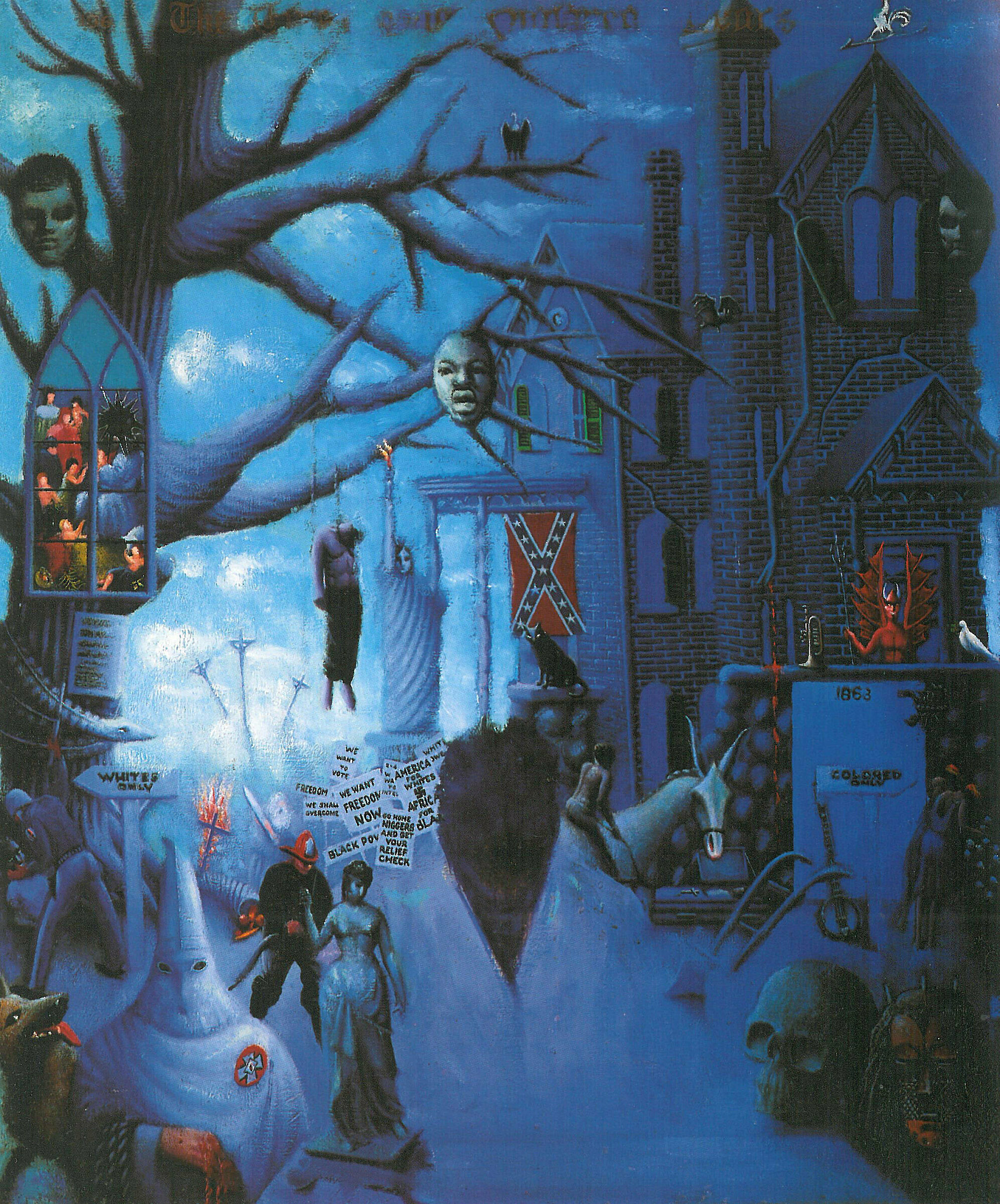Race Relations in America
Artist as Critic
In The First One Hundred Years: He Amongst You Who is Without Sin Shall Cast the First Stone: Forgive Them Father For They Know Not What They Do, c.1963-72, Motley combined symbolism and allegory with real life occurences to depict the first 100 years after the Civil War. He worked on this painting from 1963-72, chronicling historical and political events as well as the decade that he was living in and experiencing during Civil Rights Movement. The events at that time included the Birmingham church bombings, and the assassination of Dr. Martin Luther King Jr. and John F. Kennedy Jr.
a. Grades 9-12: Use the resources in the Bibliography and Links section of this guide to review the history of the Civil War through the Civil Rights movement. Ask your students to look closely at the painting. Explain that this painting is complex and may appear ambiguous. Ask them to discuss the images and symbols of racism that Motley included in the painting and their placement in the composition. For example, talk about why he chose to include images of Abraham Lincoln, Martin Luther King Jr., and John F. Kennedy Jr. Why might he have juxtaposed a lynching and the Statue of Liberty side by side? Discuss how the confederate flag continues to provoke controversy in the United States today. What view of the first 100 years has Motley portrayed?
b. Grades 9-12: Students could do this project individually or in small groups. Ask students to research a social or political theme in current events over the past 20-30 years. For example, migration, immigration, war, civil rights, racism, gay rights, or feminism. Ask them to make a collage that chronicles this theme. Encourage students to use both literal and symbolic imagery. Ask students to use text that is related to their theme.
c. Grades 9-12: View and discuss students’ collages. Are there any common themes that students selected? Ask them to dig deeper. Discuss the current state of this issue. Where has progress been made? What obstacles have been overcome? What obstacles still exist? How do students think these obstacles might be addressed now and in the future?

